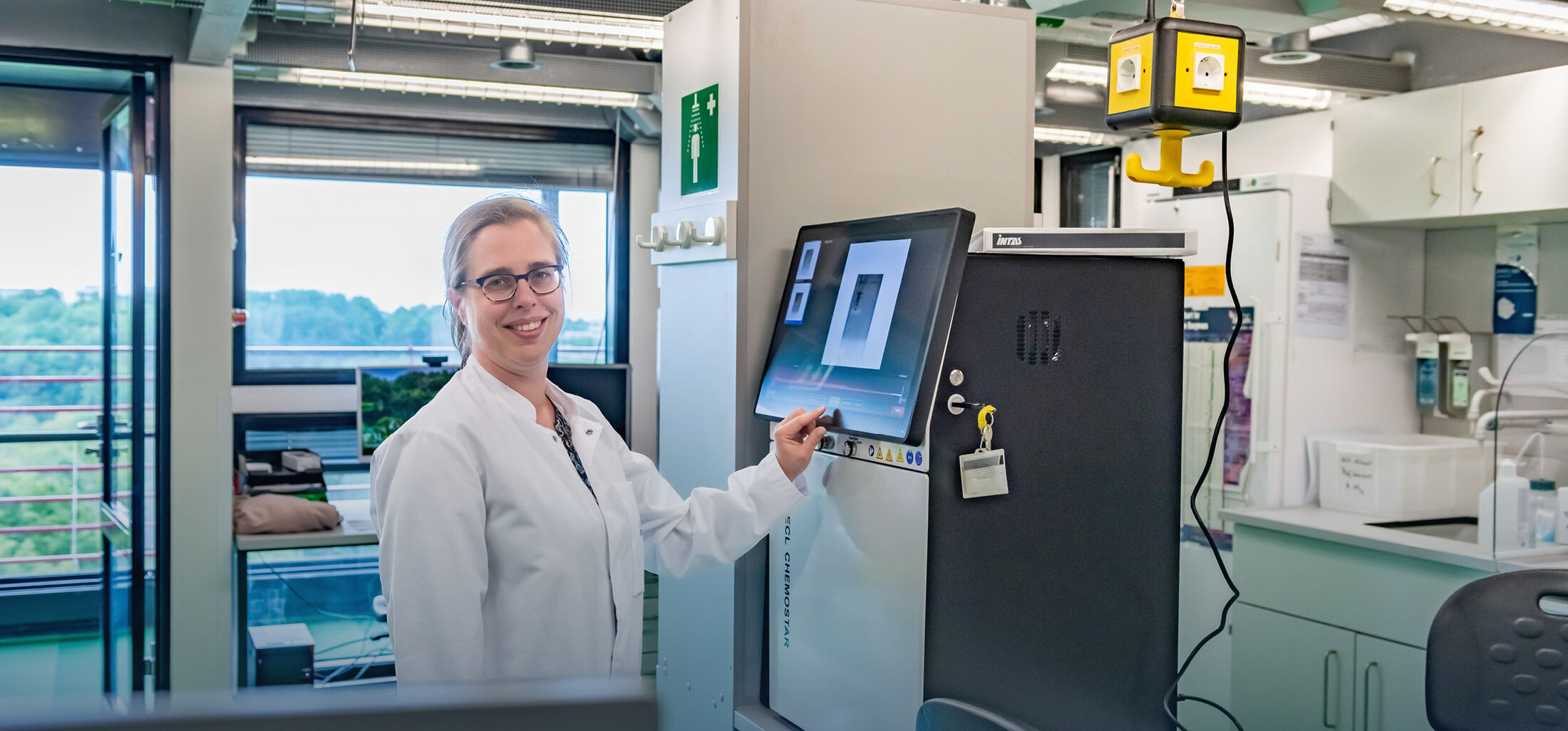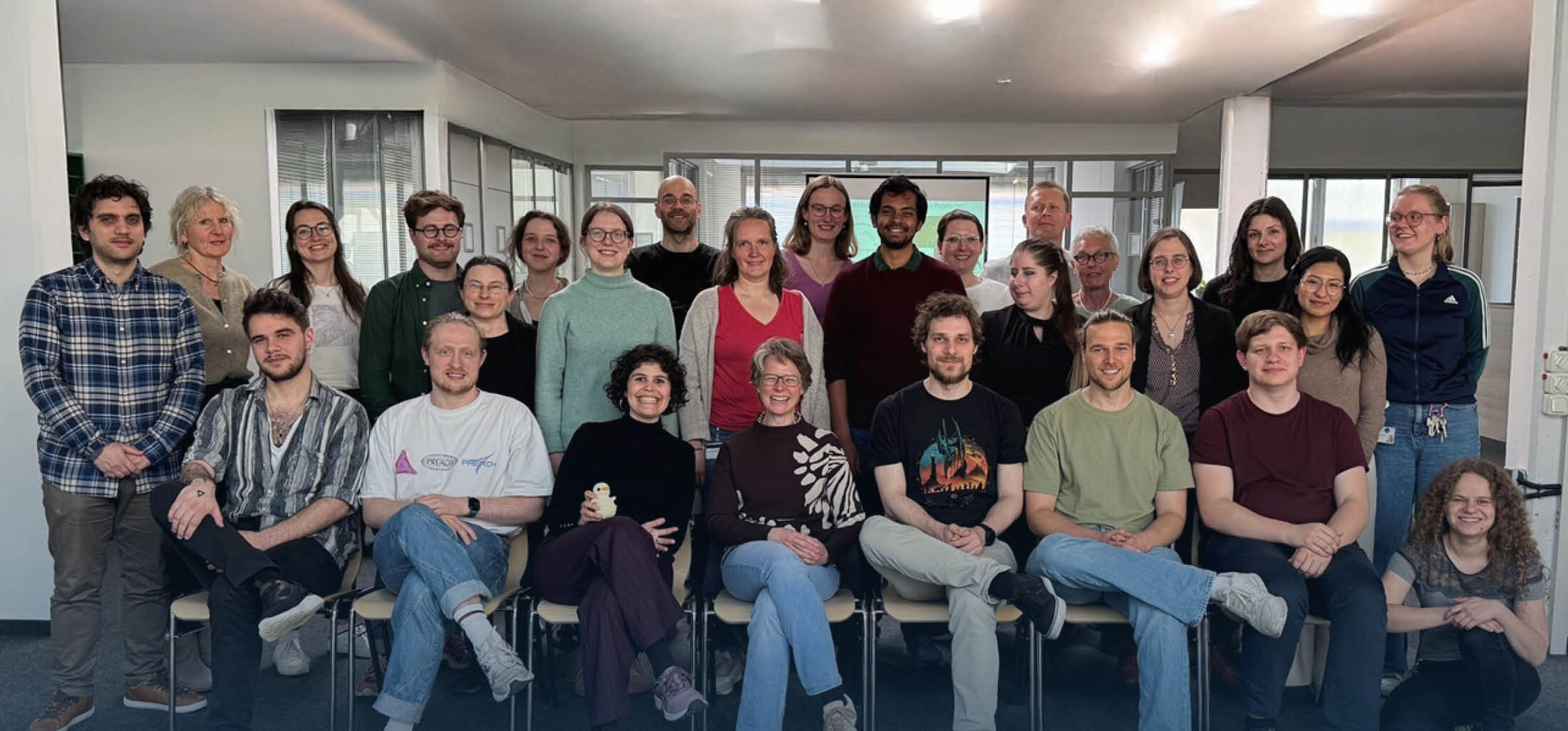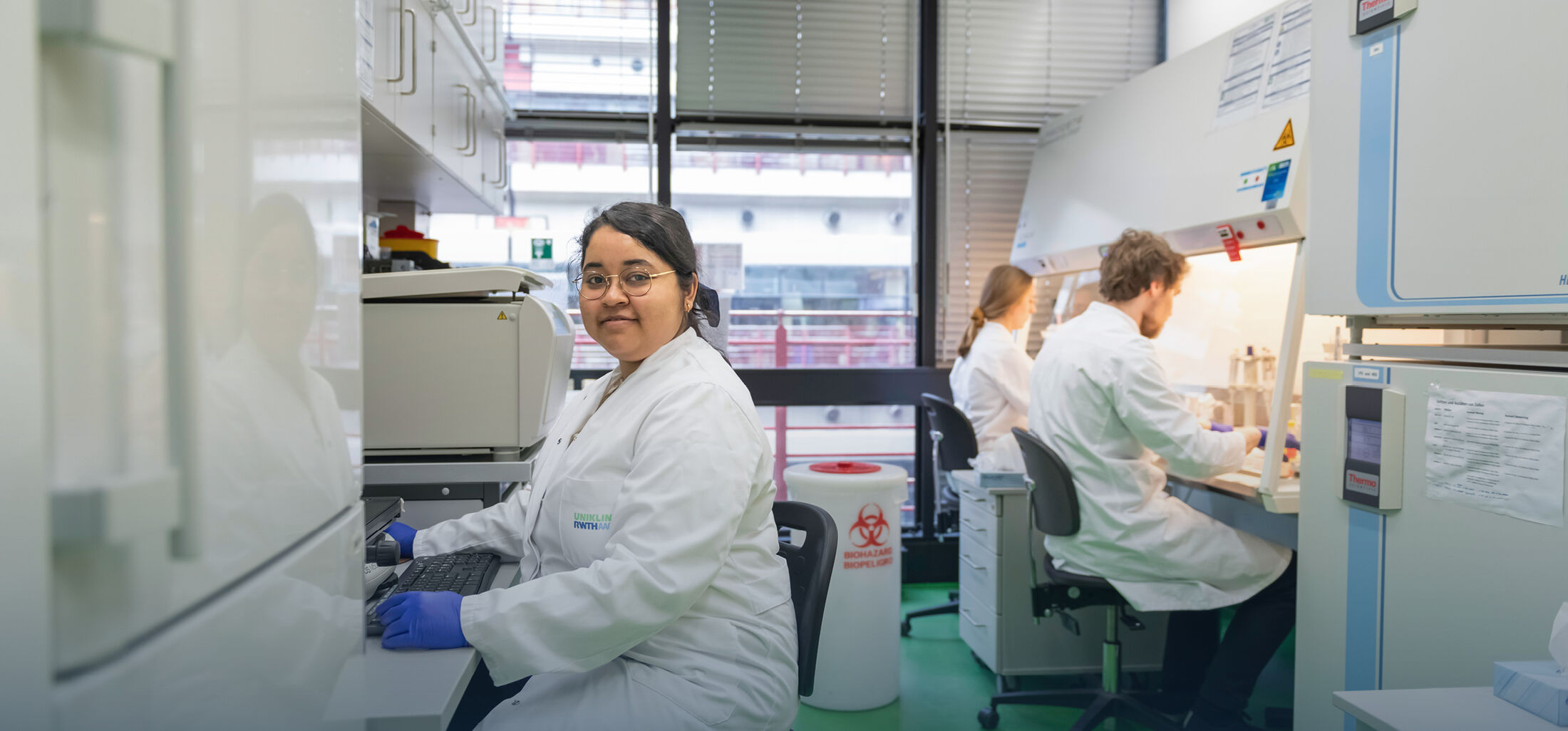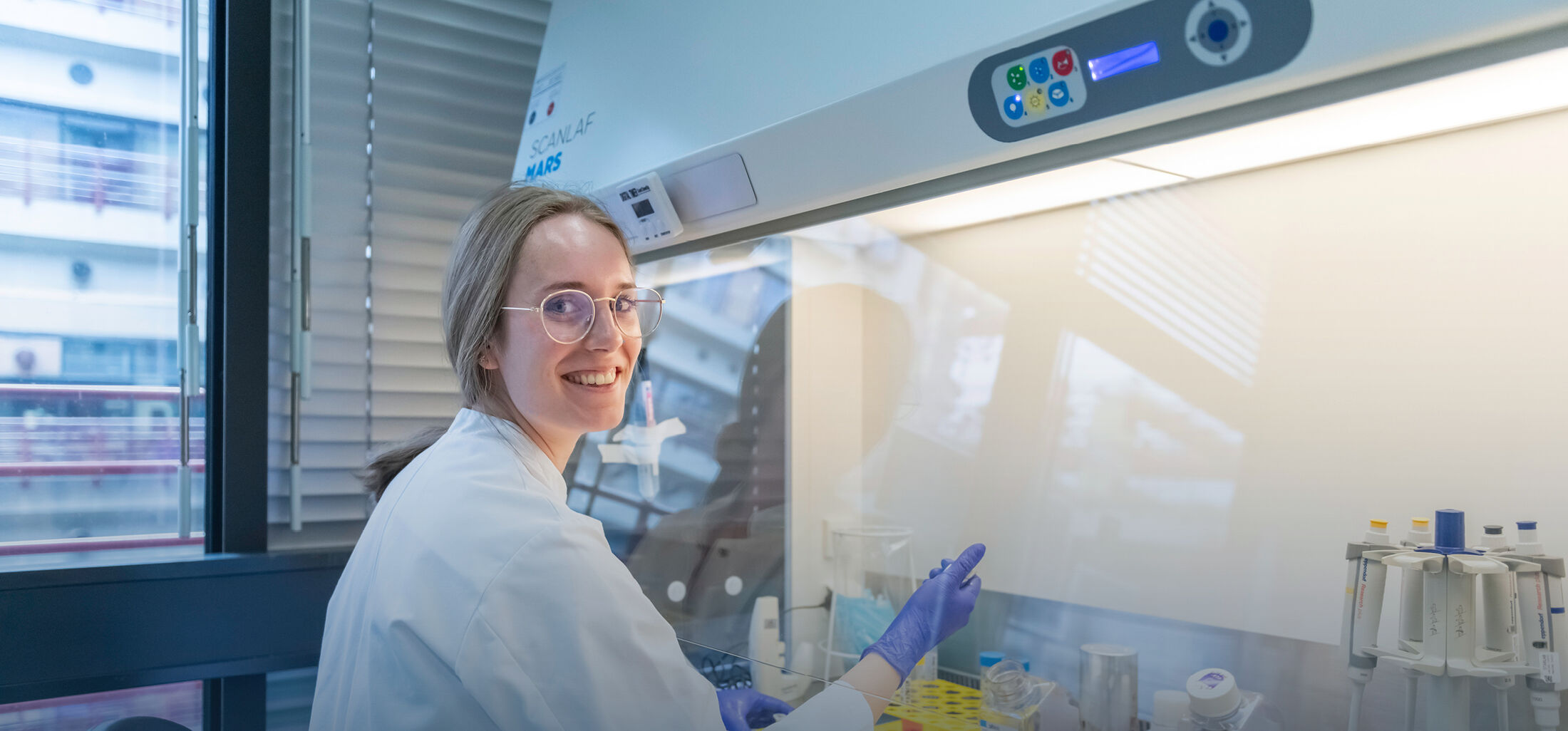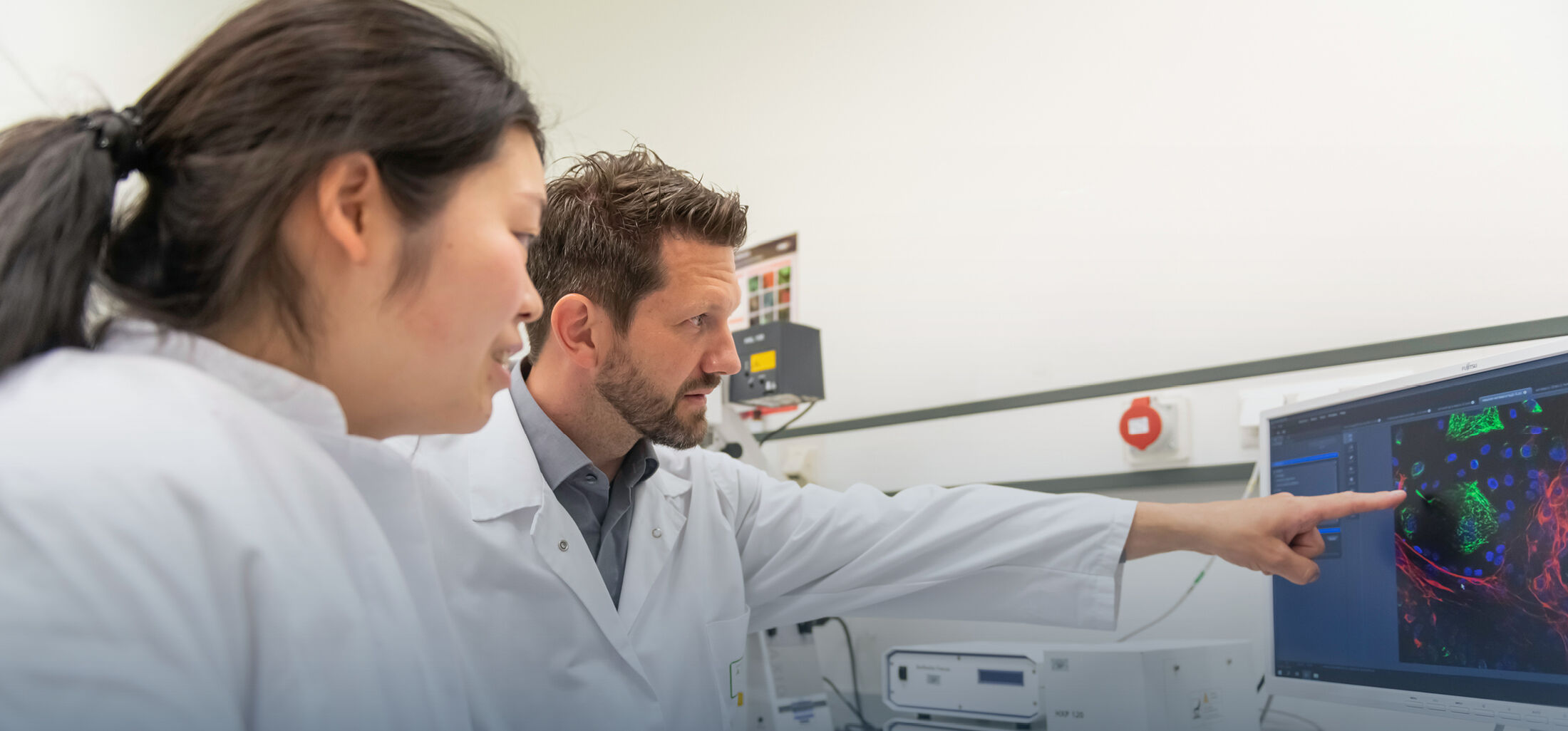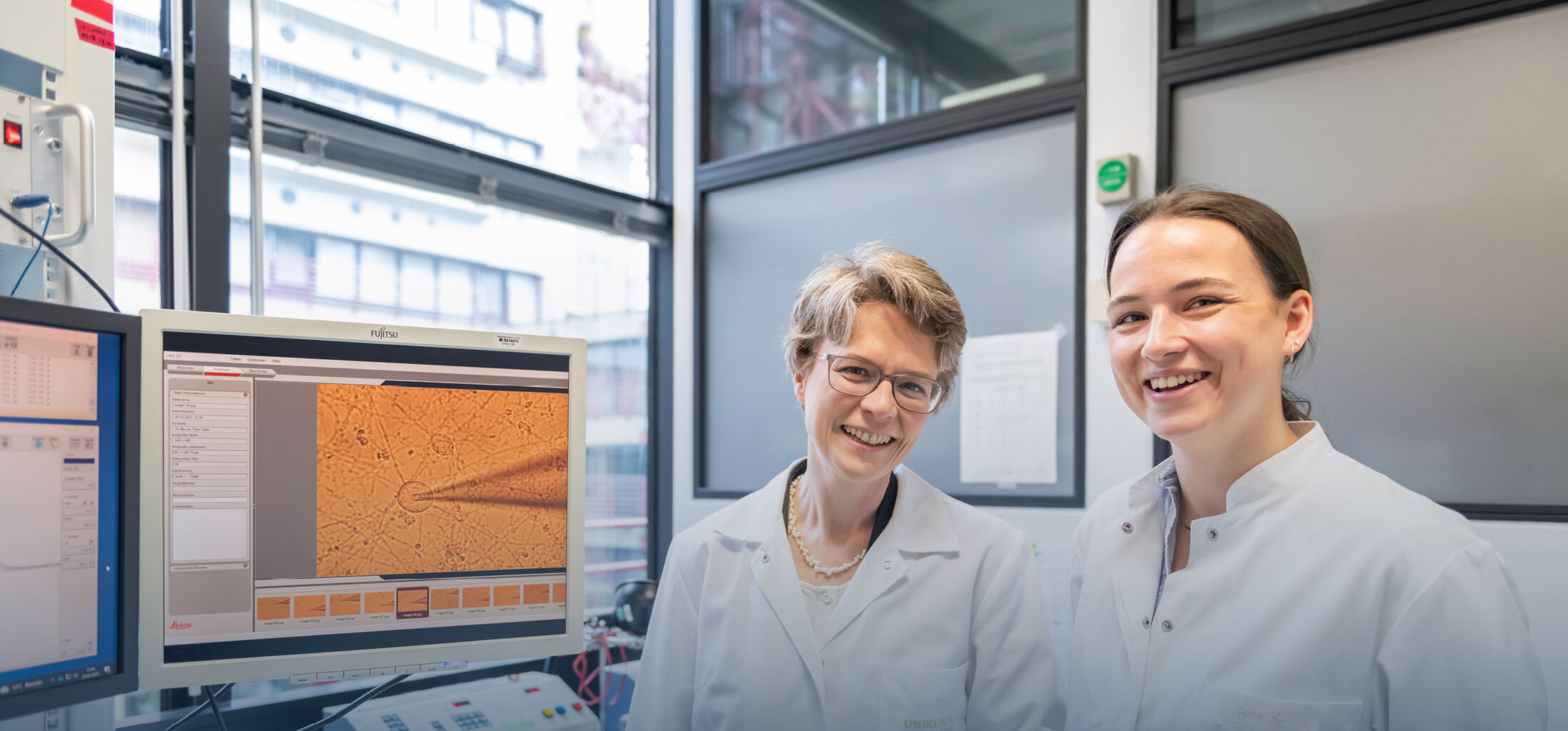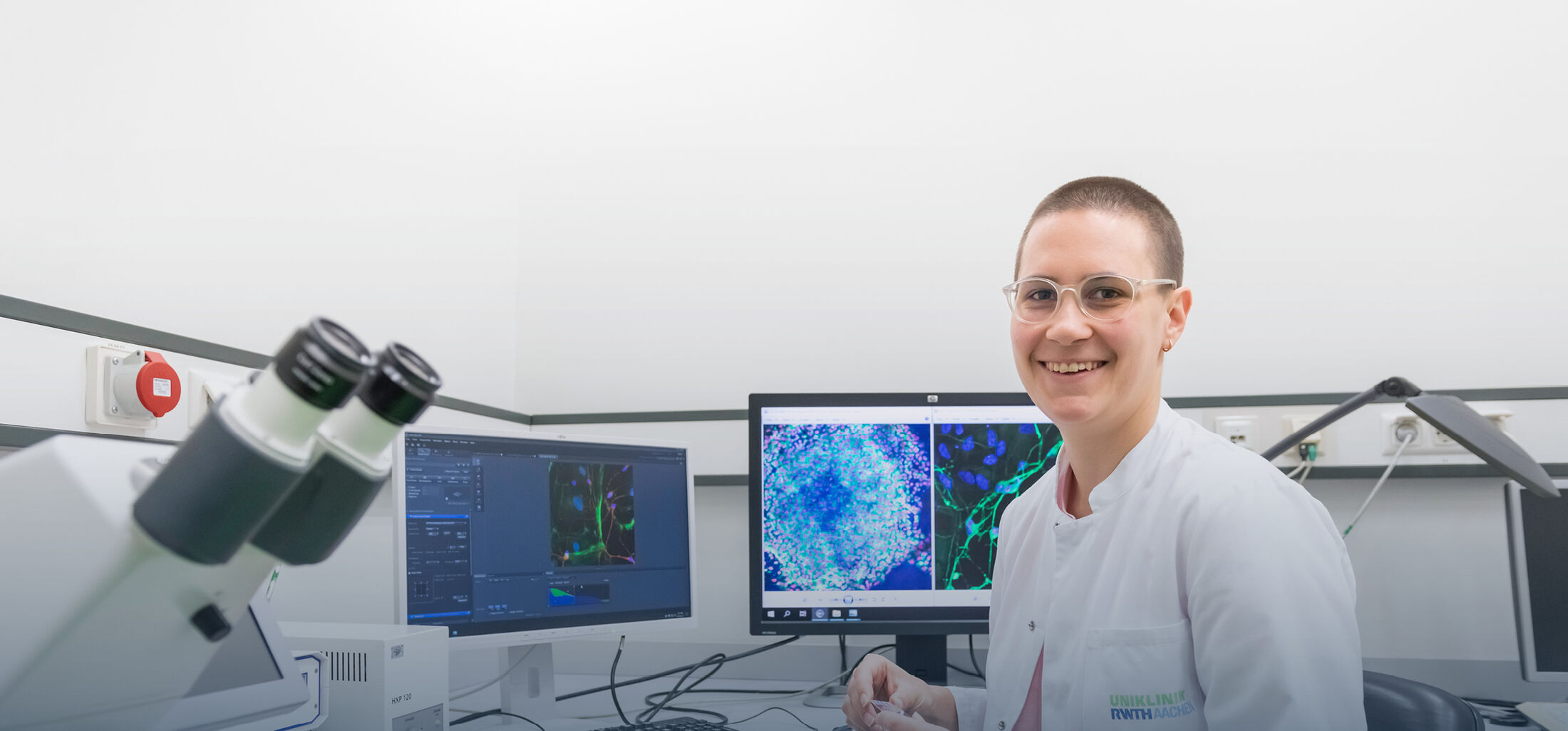Priv.-Doz. Dr. rer. nat. Frank John Patrick Kühn

Etage 6, Gang D, Raum 23
Tel: 0241 80-88803
Fax: 0241 80-82434
fkuehnukaachende
Lebenslauf
1985 – 1992
Diplomstudiengang Biologie an der Ruprecht-Karls-Universität Heidelberg. Schwerpunkte Biochemie, Genetik, Mikrobiologie, Chemie
1992 – 1995
Promotion (Dr. rer. nat.) an der Ruprecht-Karls-Universität Heidelberg am Institut für Virusforschung des Deutschen Krebsforschungszentrums, Heidelberg
Thema der Promotion:
Mutation und Funktionsanalyse der 3’-5’-Exonucleasedomäne der Herpes Simplex-Virus Typ 1 DNA-Polymerase.
1996 – 2001
Wissenschaftlicher Assistent (Postdoc) am Physiologischen Institut der Universität Zürich, Schweiz (AG Prof. Dr. med. N.G. Greeff)
seit Aug. 2001
Wissenschaftlicher Assistent (Postdoc) am Institut für Physiologie der RWTH Aachen (AG Prof. Dr. med. A. Lückhoff)
01/2006 – 12/2011
Projektleiter im DFG-Projekt: Molekulare Charakterisierung des Gatingmechanismus der Kationenkanäle TRPM2 und TRPM8. (KU2271/1-1)
12/2008
Venia legendi für das Fach Physiologie. Medizinische Fakultät RWTH-Aachen
01/2015 – 12/2017
Projektleiter im DFG-Projekt: Funktionelle Analyse eines evolutionären Vorläufers der TRPM-Subfamilie aus Nematostella vectensis in vitro und in vivo. (KU2271/4-1)
01/2018 – 12/2020
Projektleiter im DFG-Projekt: Funktionelle Analyse eines evolutionären Vorläufers der TRPM-Subfamilie aus Nematostella vectensis in vitro und in vivo. (KU2271/4-2)
01/2021 – 12/2023
Projektleiter im DFG-Projekt: Funktionelle Analyse eines evolutionären Vorläufers der TRPM-Subfamilie aus Nematostella vectensis in vitro und in vivo. (KU2271/4-3).
Arbeitsgebiete
Physiologisches Institut der Universität Zürich:
- Charakterisierung der funktionellen Rolle des Spannungssensors S4D4 bei der schnellen Inaktivierung des spannungsabhängigen Natriumkanals rNav1.2 in Xenopus oocyten. Hierfür wurden sowohl Ionenströme als auch Gatingströme analysiert. Für die Messung der Gatingströme wurde eine Zwei-Elektroden-Spannungsklemme erfolgreich optimiert.
- Funktionelle Analyse von bNav1.5, einer Variante des kardialen Natriumkanals, die gegenüber einem Derivat des Piperazinyl Indols DPI 201-206 unempfindlich ist. Dabei handelt es sich um einen synthetischen Inaktivierungs-Hemmer, dessen Wirkung auf einer spezifischen Verlängerung des Aktionspotentials im Herzmuskel beruht (cAMP-unabhängiger positiv inotroper Effekt).
Institut für Physiologie der RWTH Aachen:
- Molekulare Charakterisierung des Gatingmechanismus der Kationenkanäle TRPM2 und TRPM8. Die beiden Verwandten innerhalb der Familie der Transient Receptor Potential Ionenkanäle (41% Homologie) zeichnen sich durch eine grundlegend verschiedene Stimulierbarkeit aus. Die Sequenzhomologie zwischen diesen beiden Kanälen ist besonders stark in den Proteindomänen ausgeprägt, die für die kontrollierte Öffnung der Pore (Gating) bedeutsam sind (S4/S5 sowie S5/S6). Durch die funktionelle Charakterisierung diverser Chimären und Mutanten von TRPM2 und TRPM8 konnten wertvolle Erkenntnisse über die Struktur-Funktionsbeziehung in diesen Kanälen gewonnen werden.
- Darüber hinaus wurde die funktionelle Relevanz verschiedener Spleißvarianten von TRPM2 analyisert.
- Test von neu entwickelten synthetischen Substanzen (Derivate des Menthols bzw. Icilins) hinsichtlich ihrer Wirkung auf TRPM8.
- Untersuchung einer durch fluid-flow induzierten Mechanosensitivität des hTRPA1.
- Ein neuer bereits bei anderen Vertretern der TRP-Familie sehr erfolgreich angewandter Ansatz zur Aufklärung des komplexen Gatingmechanismus ist die vergleichende Struktur- Funktionsanalyse von Speziesvarianten. Aufgrund der Entdeckung, dass TRPM2-ähnliche Kanäle sowohl in einzelligen Eukaryonten als auch. einfachen Eumetazoa (z.B. Nesseltieren) die einzigen Vertreter der TRPM-Familie repräsentieren, wurde postuliert, dass ein solcher Kanal der mutmaßliche evolutionäre Vorläufer aller rezenten TRPM-Kanäle darstellen könnte. Daher ist die funktionelle Analyse dieser „urtümlichen" TRPM2- Kanäle nicht nur für die Charakterisierung des humanen TRPM2 sondern auch für weiterer rezente Vertreter der Säuger-TRPM-Familie z.B TRPM3 hochinteressant.
Publikationen
(*corresponding author)
- Frank J.P. Kühn and Charles W. Knopf* (1996). Herpes simplex virus type 1 DNA polymerase. Mutational analysis of the 3’-5’ exonuclease domain. J. Biol. Chem. 271:29245-54.
- Cornelia Franz, Frank J.P. Kühn, and Charles W. Knopf* (1999). DNA and protein interactions of the small subunit of herpes simplex type 1 DNA polymerase. Virology 253:55-64.
- Uwe Schreiner, Ursula Hansen, Frank J.P. Kühn, and Charles W. Knopf* (1999). A novel protein tag from herpes simplex virus type 1 DNA polymerase. Intervirology 42:17- 21.
- Frank J.P. Kühn and Nikolaus G. Greeff* (1999). Movement of voltage sensor S4 in domain 4 is tightly coupled to sodium channel fast inactivation and gating charge immobilization. J.Gen. Physiol. 114:167-83.
- Nikolaus G. Greeff* and Frank J.P. Kühn (2000). Sodium influx and variable ratio of permeability to gating charge of rBIIA sodium channels in Xenopus oocytes. Biophys. J. 79:2434-53.
- Frank J.P. Kühn* and Nikolaus G. Greeff (2002). Mutation D384N alters recovery of the immobilized gating charge in rat brain II A sodium channels. J. Membr. Biol. 185:145-155.
- Helena Denac, Meike Mevissen*, Frank J.P. Kühn, Cornelia Kühn, Christophe T. Guionaud, Günther Scholtysik and Nikolaus G. Greeff (2002). Molecular cloning and functional characterization of a unique mammalian cardiac Na(v) channel isoform with low sensitivity to the synthetic inactivation inhibitor SDZ 211-939. J Pharmacol. Exp. Ther. 303:89-98.
- Frank J.P. Kühn and Nikolaus G. Greeff* (2003). Gating properties of a sodium channel with three arginines substituted by histidines in the central part of voltage sensor S4D4. J. Membr. Biol. 193:23-34.
- Frank J.P. Kühn and Andreas Lückhoff* (2004). Sites of the NUDT9-H domain critical for ADP-ribose activation of the cation channel TRPM2. J. Biol. Chem. 279:46431-37.
- Inka Heiner, Natasha Radukina, Jörg Eisfeld, Frank J.P. Kühn and Andreas Lückhoff* (2005). Regulation of TRPM2 channels in neutrophil granulocytes by ADP-ribose: a promising pharmacological target. Naunyn Schmiedebergs Arch. Pharmacol. 371:325-33 (invited Review).
- Frank J.P. Kühn, Inka Heiner and Andreas Lückhoff* (2005). TRPM2: a calcium influx pathway regulated by oxidative stress and the novel second messenger ADP-ribose. Pflügers Arch. 451:212-19 (invited Review).
- Frank J.P. Kühn*, Gabriel Knop and Andreas Lückhoff (2007). The transmembrane segment S6 determines cation versus anion selectivity of TRPM2 and TRPM8. J. Biol. Chem. 282:27598-609.
- Frank J.P. Kühn*, Cornelia Kühn, Mustafa Naziroglu and Andreas Lückhoff (2009). Role of an N-terminal splice segment in the activation of the cation channel TRPM2 by ADP-ribose and hydrogen peroxide. Neurochem. Res. 34:227-33.
- Muhammad R. Bari, Sanian Akbar, Mohamed Eweida, Frank J.P. Kühn, Amanda J. Gustafsson, Andreas Lückhoff and Md. Shahidul Islam* (2009). H2O2-induced Ca2+ influx and its inhibition by N-(p-amylcinnamoyl) anthranilic acid in the β-cells involvement of TRPM2 channels. J Cell Mol Med. 13:3260-67.
- Frank J.P. Kühn*, Cornelia Kühn and Andreas Lückhoff (2009). Inhibition of TRPM8 by icilin distinct from desensitization induced by menthol and menthol derivatives. J. Biol. Chem. 284:4102-11.
- Frank J.P. Kühn*, Katja Witschas, Cornelia Kühn and Andreas Lückhoff (2010). Contribution of the S5-Pore-S6 Domain to the gating characteristics of the cation channels TRPM2 and TRPM8. J. Biol. Chem. 285:26806-814.
- Mathis Winking, Daniel C. Hoffmann, Cornelia Kühn, Ralf-Dieter-Hilgers, Andreas Lückhoff and Frank J.P. Kühn* (2012). Importance of a conserved sequence motif in transmembrane segment S3 for the gating of human TRPM8 and TRPM2. PLoS One 7: e49877.
- Frank J.P. Kühn*, Mathis Winking, Cornelia Kühn, Daniel C. Hoffmann and Andreas Lückhoff (2013). Surface expression and channel function of TRPM8 are cooperatively controlled by transmembrane segments S3 and S4. Pflügers Arch. 465:1599-1610.
- Frank J.P. Kühn*, Cornelia Kühn and Andreas Lückhoff (2015). Functional Characterisation of a TRPM2 orthologue from the sea anemone Nematostella vectensis in human cells. Sci Rep. 5:8032.
- Frank J.P. Kühn*, Cornelia Kühn, Mathis Winking, Daniel C. Hoffmann and Andreas Lückhoff (2016). ADP-ribose activates the TRPM2 channel from the sea anemone Nematostella vectensis independently of the NUDT9H domain. PLoS One 11: e0158060.
- Frank J.P. Kühn*, Mathis Winking, Cornelia Kühn, Daniel C. Hoffmann and Andreas Lückhoff (2017). Modulation of activation and inactivation by Ca2+ and 2-APB in the pore of an archetypal TRPM channel from Nematostella vectensis. Sci Rep. 7:7245.
- Frank J.P. Kühn*, Cornelia Kühn and Andreas Lückhoff (2017). Different principles of ADP-ribose-mediated activation and opposite roles of the NUDT9 homology domain in the TRPM2 orthologs of man and sea anemone. Front. Physiol. 8:879. (invited Review).
- Frank J.P. Kühn* (2017). New insights into the interaction between ADP-ribose and human TRPM2 channel. Biotarget 1:14 (invited Editorial).
- Frank J.P. Kühn*, Joanna M. Watt Barry V.L. Potter, Andreas Lückhoff (2019). Different substrate specificities of the two ADPR binding sites in TRPM2 channels of Nematostella vectensis and the role of IDPR. Sci Rep. 2019 Mar 21: 9(1):4985. doi:10.1038/s41598-019-41531-4. PMD: 308
- Kühn, F.J.P. Ehrlich, W. Barth, D. Kühn, C. Lückhoff, A.
Functional importance of NUDT9H domain and N-terminal ADPR-binding pocket in two species variants of vertebrate TRPM2 channels.
Sci Rep 9, 19224 (2019) - Frank J.P. Kühn Structure-Function Relationship of TRPM2: Recent Advances, Contradictions, and Open Questions. Int J Mol Sci. 4:E6481 (2020).
- Barth D, Lückhoff A, Kühn FJP*. Species-Specific Regulation of TRPM2 by PI(4,5)P2 via the Membrane Interfacial Cavity. Int J Mol Sci. 2021 Apr 28;22(9):4637. doi: 10.3390/ijms22094637. PMID: 33924946; PMCID: PMC8125603.
- Ehrlich W, Gahan JM, Rentzsch F, Kühn FJP*. TRPM2 causes sensitization to oxidative stress but attenuates high-temperature injury in the sea anemone Nematostella vectensis. J Exp Biol. 2022 Mar 15;225(6):jeb243717. doi: 10.1242/jeb.243717. Epub 2022 Mar 23. PMID: 35202476.
- Ehrlich W & Kühn FJP*. The essential inter-domain interaction between NUDT9H and channel domain of human TRPM2 is also accomplished in trans
bioRxiv 2023.06.21.545868; doi: https://doi.org/10.1101/2023.06.21.545868
